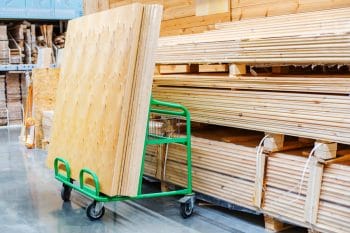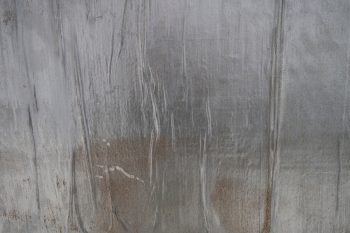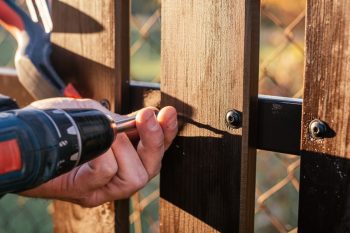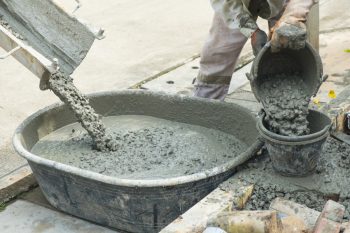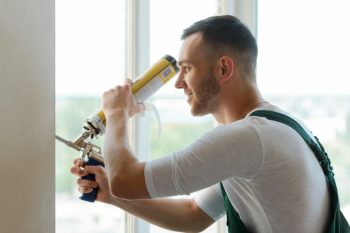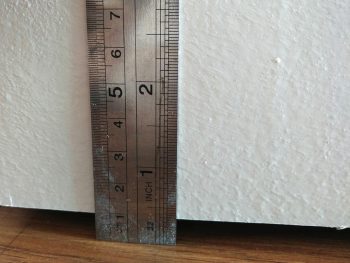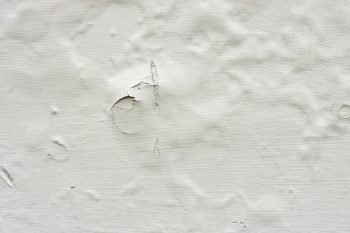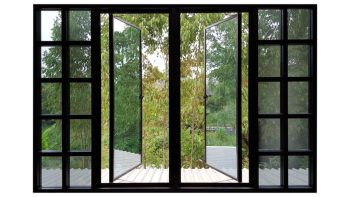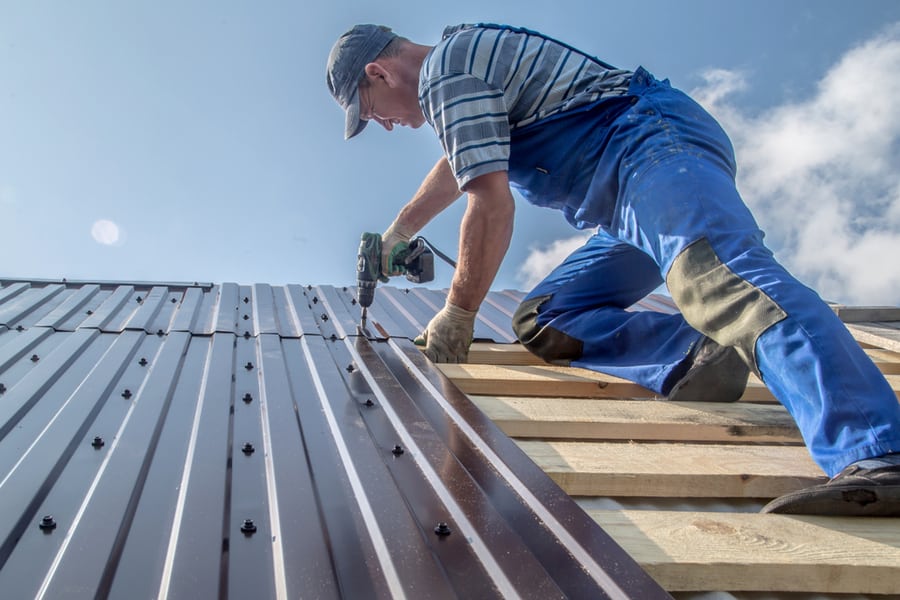
Metal roofing is one of the most popular options because it is long-lasting, resistant to harmful elements, durable, and far more energy efficient than some roofings like asphalt.
But with any roofing style, you will need the proper fastener to install it, so there won’t be leaks.
However, people are often stuck trying to figure out what fastener to use or how many to get. So, how do you know how many screws you’ll need for metal roofing?
The size of your roof determines the number of screws you’ll need for metal roofing. After knowing your roof size, you can then calculate how many nails you’ll need for the following:
- Panel installation,
- Trim or flashing,
- Panel side lap.
For a 100 feet square of metal roofing, you will need about 80 screws.
In this article, we’ll walk you through the steps to calculate the total number of screws you’ll need to install metal roofing.
Step-by-Step Guide To Determine How Many Screws You Need for Metal Roofing

Metal roofs come in different types, each offering different aesthetics and unique advantages. But irrespective of the kind of metal roof you get, be it aluminum, tin, copper, zinc, or steel, you will need the same number of screws to fasten each type, provided they are the same size.
Roofers preferably use screws to fasten metal roofs than nails because they have better-holding power and will not lose due to the roof expanding or contracting with the weather.
Also, screws are easier to remove when replacement is necessary without causing damage to the roof.
So, it does not matter whether you are a beginner at roof installation; as long as you know how to use a calculator, you can easily estimate how many screws you’ll need to install a metal roof.
Below are the steps to use the formulas to determine how many screws you need for metal roofing.
Step 1: Determine the Size of the Roof
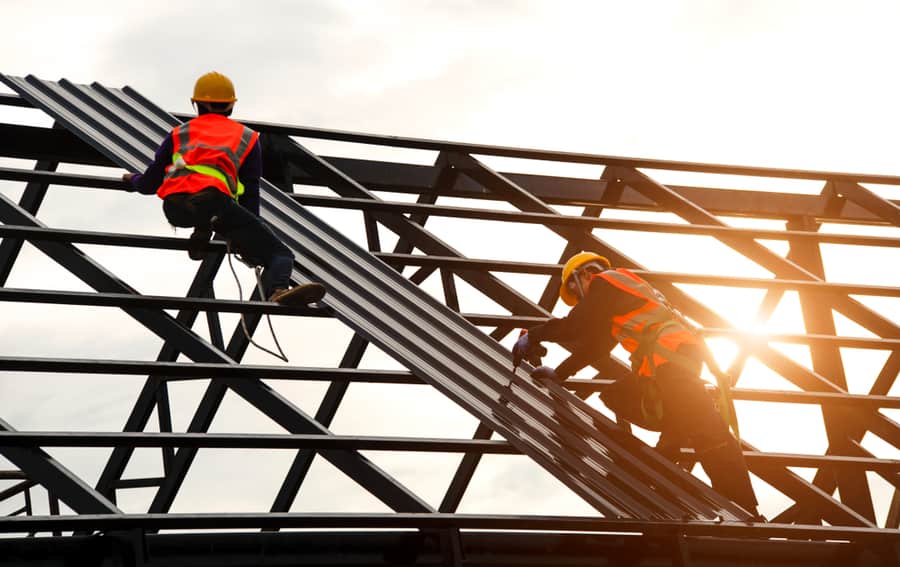
The first step is to calculate your roof area. Calculating the roof area is easy as long as you know what to measure. But first, count how many sides the roof has. Most roofs, like hip roofs, have two or four sides.
Start by measuring each side, measure the roof length in feet, and multiply it by the slope height in feet. Do this for all sides, and add the figures to get the total roof area.
Step 2: Multiply the Roof’s Square Footage by 0.80
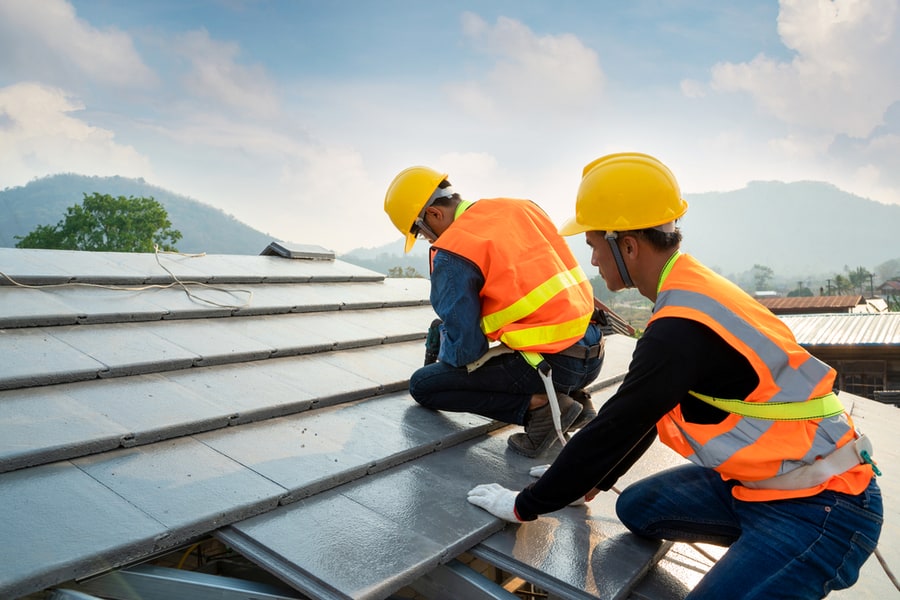
To calculate the number of screws you need to install the roof panel, multiply the roof area by a factor of 0.80. Based on standard calculations, for every 100 square feet of metal roof, you will need 80 screws.
So, 80% of the square footage of your roof is the number of screws you’ll need to install the roof panel.
Step 3: Calculate the Number of Screws for Trim or Flashing
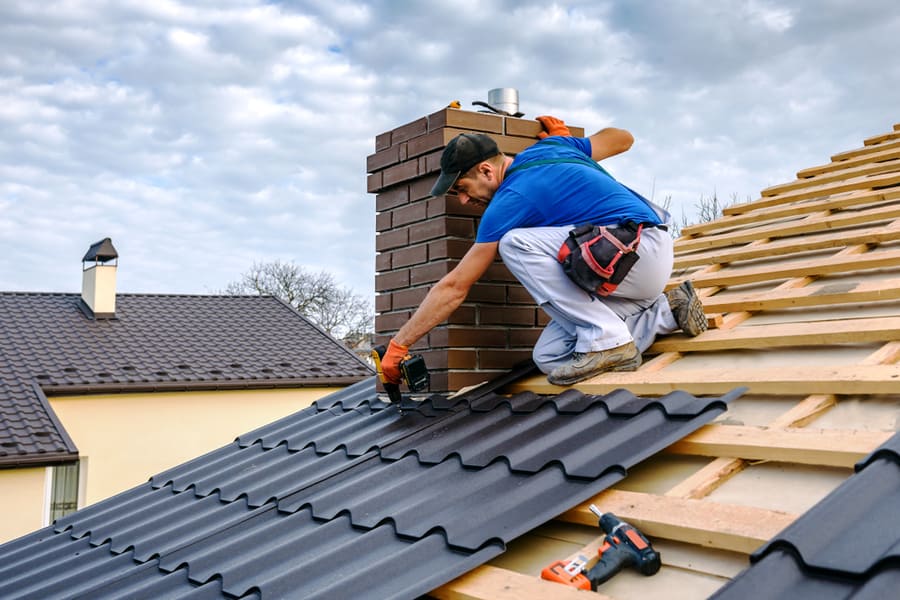
Note that the screws you need to install the roof panel are not all the screws you need to complete the roofing project. You need a special screw to fasten the trim or flashing of the roof.
To calculate this, measure the trim or flashing length in feet and multiply it by one lap of screws.
Step 4: Calculate the Number of Screws for the Side Lap

You also need to calculate the number of screws you’ll need for the side lap, which is the total square footage of your roof divided by 3. Whatever you get, divide that number again by 1.5 to get an estimate of the screws you need for the side lap panel.
Step 5: Add Everything Together
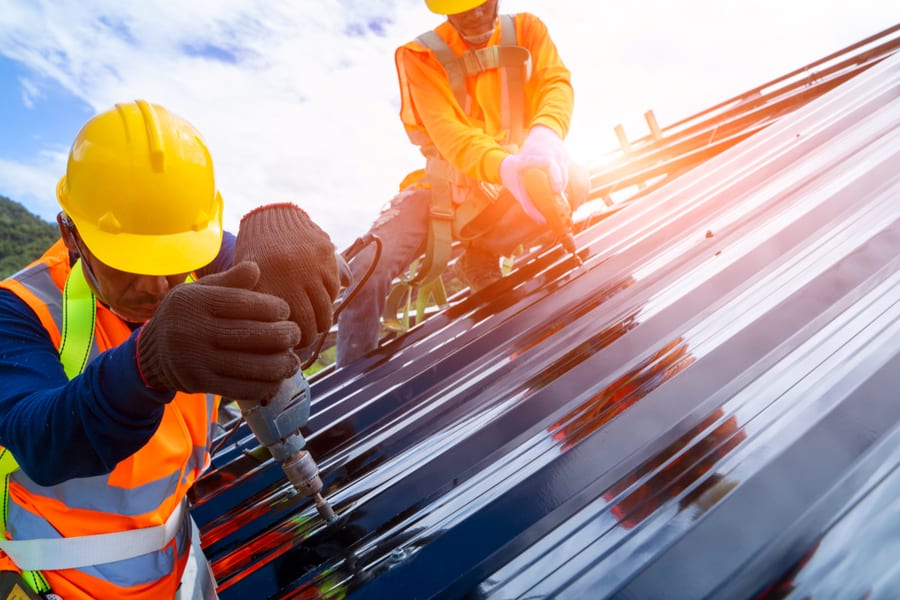
After the calculations, add the numbers together. Note that you may get decimal numbers sometimes. In such cases, estimate the number to the nearest tens or hundreds.
Also, making room for errors in your calculation is advisable, as some screws may fall off you during installation, and some screws may be defective.
How To Choose the Right Screw for Metal Roof?
Metal roofs are renowned for their durability and low maintenance. But it is essential to install the metal roofing sheet with the correct size of screw. Below are the different sizes of screws you can use for metal roofs and their importance.
1. 1-Inch Screw

The 1-inch screw is best for finishing up about 2 to 3 inches below the vented ridge on the roof. The 1-inch screw is ideal when you want only about 3/4 inch penetration.
2. 1 1/2-Inch Screw
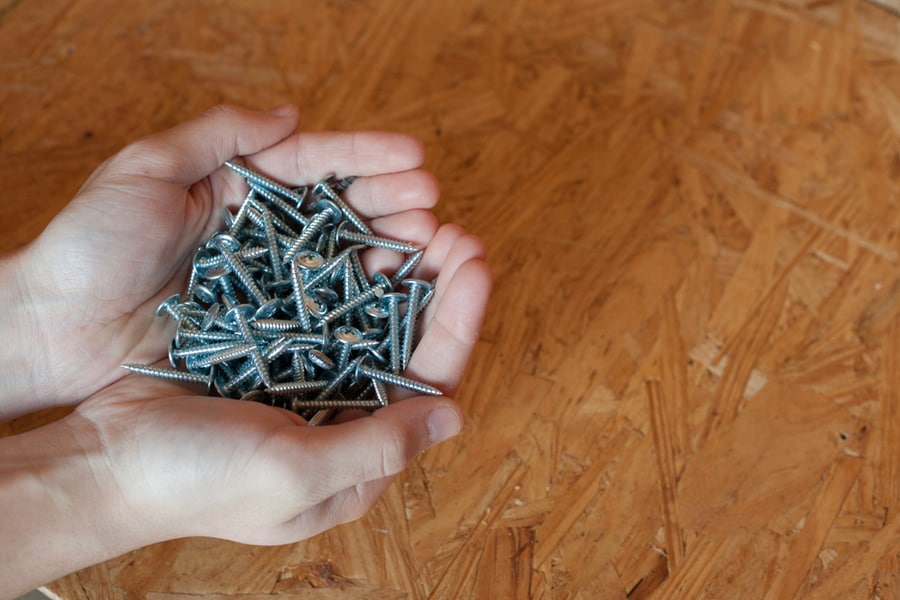
The 1 1/2 inches screws are much longer screws offering a penetration depth of about 1 1/4 inches. This screw provides a firm hold of the roofing panel in place. Considering its size, roofers often use it in areas that require stronger hold and longer screws.
3. 5/16-Inch Screw
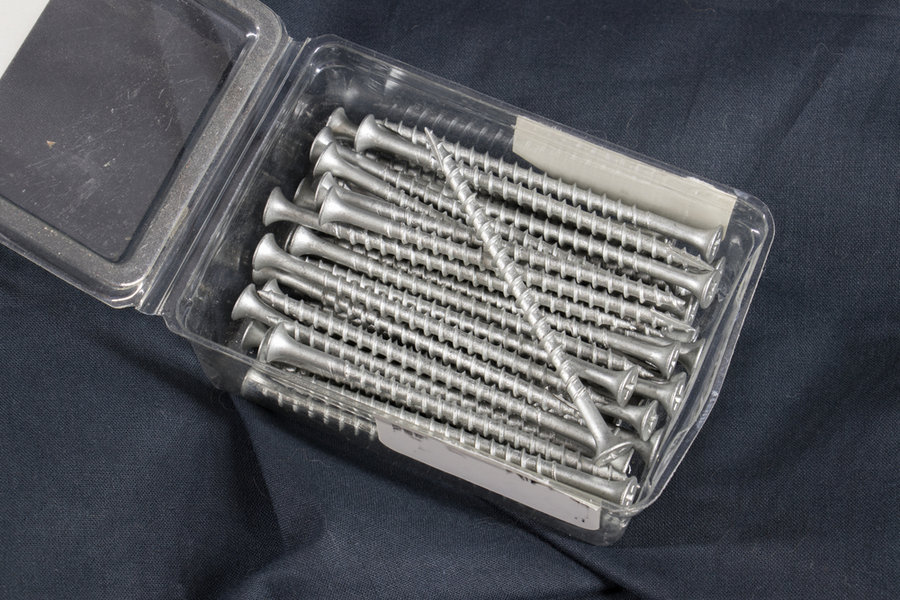
The 5/16-inch screw is a small-sized screw often used in r-type paneling. Roofers often use it in every four-foot area of the roof until reaching where the roof panel overlaps. When it gets to the overlay, roofers stop and use a larger screw, like the 1 1/2-inch screw, before continuing with it.
4. 1/4-Inch Screw

The 1/4-inch screw is accustomed to the trim screw. Roofers often use this screw at every 2-foot increment of the trim.
The frame is often notched in the middle and then screwed down with these tiny screws.
Takeaway
Metal roofing is an excellent option for any roofing project. Although they have disadvantages such as poor sound insulation; nevertheless, they are cost-effective and an excellent option for many applications.
However, calculating the number of screws you need to complete a metal roof work is easy, as you can see from this guide.
And when you go shopping for the nails, take note of the type of nails you get and where you install the screws on the panel, so they last longer and do not leak or become susceptible to the environmental elements.
Frequently Asked Questions
What Is the Most Common Cause of Metal Roof Leaks?
Using incorrect fasteners is the single most significant cause of leaks on metal roofs. You can use different types and sizes of fasteners to install a metal roof.
So, we recommend you learn where to use each fastener to avoid roof leaks.
Should You Predrill or Not When Attaching a Metal Roof?
Often, you don’t need to predrill when installing a metal roof. For example, most screws for fastening metal roofs are self-drilling.
Moreover, a lot can go wrong when predrilling, which can cause leakage on the roof.
An instance where predrilling makes sense is when you are attaching the roof to a solid wood substrate.
